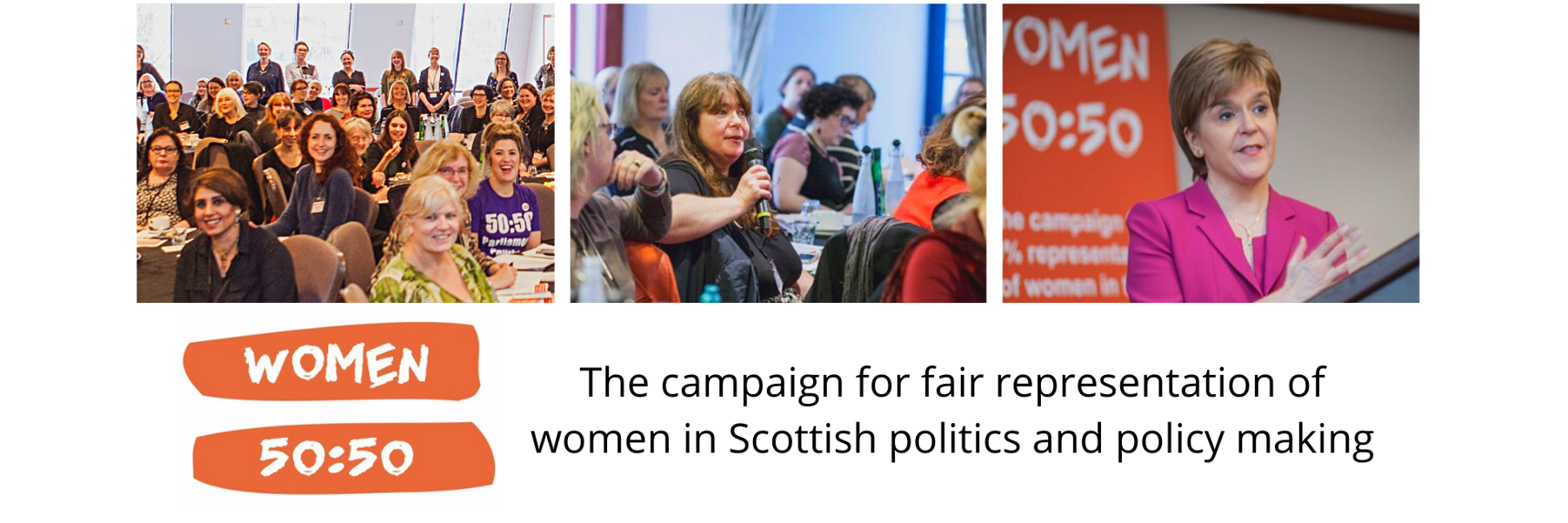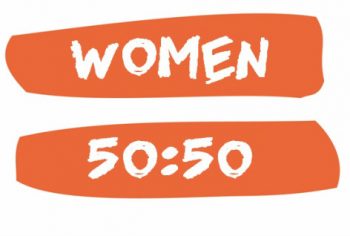By Ruth Wilkinson (Research Placement Student from University of Strathclyde)
In just a few months we will see the launch of party manifestos for the Holyrood elections. Maybe it’s a good idea to look at what the parties said last time – and the time before – and consider which of their objectives they actually achieved. Then, bearing that in mind, we can think about what we’d like to see them promising for 2021 and beyond.
It’s noticeable, as it was with the Programmes for Government, that gender equality has definitely moved up the agenda in the last ten years. In the 2011 manifestos only Labour and the Greens make explicit mention of equality as an issue. Labour’s manifesto[1] boasts a photo of (and quote from) a young female shipyard apprentice, a commitment to tackle gendered career segregation, and an Equality Unit to reinforce the provisions of the 2010 Equality Act. The Greens[2] have plenty of pictures of their female candidates, plans to make Gender Budget Analysis standard in both national and local government, and a unit to monitor gender inequality in public sector pay[3]. So at least two parties do have gender equality on their radar – but nobody mentions equality in terms of political representation, whether that be for women or any other under-represented group.
Things have changed by 2016[4]. As well as much more which is explicitly about women’s needs, in terms of (for example) benefits, work, education, or the criminal justice system, gender equality in public life is very much an issue. Quota is no longer a dirty word. Three of the main parties (Greens, Labour, and SNP) explicitly say they support Women 50:50, which had been launched in 2014; the efforts they have been making to increase women’s representation are evidence of that (see blogPromoting Equality in Elections – from AWS to Zipping).
At this point it is worth pausing to ask: how relevant are party manifestos to what actually happens in parliament? We might reasonably expect the SNP, as the party of government, to be able to point to a record of achievement (See blog Moving Up The Agenda: Women’s Issues in the Programme for Government), but what about the other parties? How much can opposition MSPs expect to put their manifestos into practice?
Holyrood was set up using proportional representation in the expectation of coalition government and cross-party co-operation. Clearly, when policies are common to several manifestos they will have cross-party support. In 2016 no fewer than four of the main parties promised to promote gender quotas on public boards, so it is no surprise to find the Gender Representation on Public Boards (Scotland) Act of 2018 becoming reality – but what if a party’s pledges don’t align with the government’s?
Opposition MSPs can influence what happens in a number of ways. Most obviously, they can still bring bills forward for consideration. As committee members they can have considerable say in shaping legislation. They have regular opportunities, for example at First Minister’s Questions, to hold the government to account. And they can work with groups outside parliament to influence the direction of government policy. Women’s groups have played an important role in finding and publicising information about such things as gender pay gaps and parties’ policies on inclusion and diversity, as well as keeping up pressure on government and opposition parties to be gender-aware in all their policy-making. Sometimes ideas which aren’t initially widely promoted nonetheless bear fruit: only the Greens suggested a media watchdog against sexism and misogyny in 2016, but two years later the Government was convening a round table on online abuse.
There has undoubtedly been progress in gender equality over the last decade. What should parties be promising for the 2020s?
A school report might urge keeping up the good work on bringing forward gender equality and tackling entrenched sexism in our society. This applies not just to parties’ own practices but across the board; the wide-ranging brief of the First Minister’s Advisory Council on Women and Girls gives an idea of how much work there is still to do. It would be a positive move if policies such as quotas of women on boards could apply to all sectors, not just the public sphere. What if diversity quotas were also legally applied to the selection processes within political parties? That would surely mitigate the tendency of white male panels to choose candidates like themselves, just as managers tend to hire people like them in other walks of life.
Meanwhile there is a definite feeling of Must Try Harder when it comes to equality in other areas. There is much more awareness in society in general now than, say, ten years ago that those working for women’s equality need to pay attention to the particular needs of women who also belong to other disadvantaged groups: women of colour, disabled women, LGBTQ+ women, working-class women, women who are dismissed on account of either their youth or their age. It would be wonderful to see all the parties making a concerted effort to select candidates whose election would lead to a Scottish Parliament which reflects the Scottish population in all its variety. This will mean a lot of work at grassroots level, long before the candidate selection process, to encourage wider political participation in all sectors of society.
[1] https://web.archive.org/web/20110506142001/http://www.scottishlabour.org.uk/uploads/84613091-e7ae-5ce4-7dff-39f1789cf681.pdf
[2] https://greens.scot/sites/default/files/Manifestos/2011-Holyrood-Manifesto.pdf
[3] This is ongoing work – see for example https://www.swbg.org.uk/
[4] https://www.engender.org.uk/content/publications/Gender-edit-Holyrood-2016.pdf

